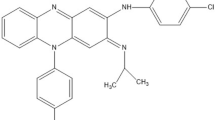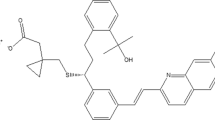Abstract
The current research endeavours quality-by-design (QbD)-aided chromatographic techniques for the quantification of gliclazide (GLZ) in bulk and pharmaceutical dosage forms. Analytical QbD was initiated by assigning both an analytical target profile (ATP) and critical analytical attributes (CAAs). Furthermore, risk evaluation studies, along with factor screening studies, helped identify critical method parameters (CMPs). Optimisation was carried out using a 32 full factorial design by utilising the identified CMP, that is, flow rate (X1) and pH of buffer (X2) at three different levels along with evaluation of the selected CAA, that is, the retention time (Y1) and the peak area (Y2). In addition, the influence of sole and interactive CMPs on CAAs was checked using the data obtained statistically and with response surface plots. The confirmation of significance (P < 0.05) of the method parameters was determined using analysis of variance (ANOVA). Chromatographic separation was achieved using a stainless-steel C8 column (25 cm × 4 mm) in isocratic elution mode using phosphate buffer (pH 3.4) and HPLC-grade acetonitrile (50:50 v/v) as the eluent. The flow rate was adjusted to 1 mL min−1 and the eluent was detected at 230 nm. The validated method, alongside subsequent stress degradation studies conducted according to the ICH guidelines, further favours it as a highly efficient method for the analysis of regular drugs as well as their degraded products. The method proposed above provided a successful demonstration of the QbD-based approach in developing an extremely sensitive and dependable technique for estimating the GLZ for routine analysis and pre-clinical applications.






Similar content being viewed by others
Availability of Data and Materials
All data and materials are available upon request.
Abbreviations
- GLZ:
-
Gliclazide
- QbD:
-
Quality by design
- ATP:
-
Analytical target profile
- CAA:
-
Critical analytical attributes
- CMP:
-
Critical method parameters
- ICH:
-
International Conference on Harmonisation
- NIDDM:
-
Noninsulin-dependent diabetes mellitus
- GI:
-
Gastrointestinal
- FEMA:
-
Failure mode and effective analysis
- RP-UHPLC:
-
Reverse phase ultrahigh pressure liquid chromatography
- DAD:
-
Diode array detector
- UV:
-
Ultraviolet
- API:
-
Active pharmaceutical ingredient
- DoE:
-
Design of experiment
- ANOVA:
-
Analysis of variance
- MLRA:
-
Multiple linear regression analysis
- LQC:
-
Lower quality control
- MQC:
-
Middle quality control
- HQC:
-
Higher quality control
- HCl:
-
Hydrochloric acid
- RA:
-
Risk assessment
References
Sarkar A, Tiwari A, Bhasin PS, Mitra M (2011) Pharmacological and pharmaceutical profile of gliclazide: a review. J Appl Pharm Sci 01(09):11–19
Delrat P, Paraire M, Jochemsen R (2002) Complete Bioavailability and lack of food-effect on pharmacokinetics of gliclazide 30 mg modified release in healthy volunteers. Biopharm Drug Dispos 157(2001):151–157
Sandhu PS, Beg S, Katare OP, Singh B (2016) QbD-driven development and validation of a HPLC method for estimation of tamoxifen citrate with improved performance. J Chromatogr Sci 8:1–12. https://doi.org/10.1093/chromsci/bmw090
Bonde S, Bonde CG, Prabhakar B (2019) Quality by design based development and validation of HPLC method for simultaneous estimation of paclitaxel and vinorelbine tartrate in dual drug loaded liposomes. Microchem J. https://doi.org/10.1016/j.microc.2019.103982
Manwar JV, Vispute SS, Kumbhar DD, Manmode RS, Bakal RL, Jadhao RG, Jogdand SD (2016) Response surface based optimization of system variables for liquid chromatographic analysis of candesartan cilexetil. Integr Med Res. https://doi.org/10.1016/j.jtusci.2016.02.004
Sangshetti JN, Deshpande M, Arote R, Zaheer Z, Shinde DB (2014) Quality by design approach: regulatory need. Arab J Chem. https://doi.org/10.1016/j.arabjc.2014.01.025
Musters J, Kellenbach E (2013) Applying QbD principles to develop a generic UHPLC method which facilitates continual improvement and innovation throughout the product lifecycle for a commercial API. Org Process Res Dev 17:87–96
Dangre PV, Phad RD, Surana SJ, Chalikwar SS (2019) Quality by design (QbD) assisted fabrication of fast dissolving buccal film for clonidine hydrochloride: exploring the quality attributes. Adv Polym Technol 2019:1–13
Thakur D, Jain A, Ghoshal G (2016) RP-HPLC method development using analytical QbD approach for estimation of cyanidin-3-O-glucoside in natural biopolymer based microcapsules and tablet dosage form. J Pharm Investig. https://doi.org/10.1007/s40005-016-0269-5
Orlandini S, Pinzauti S, Furlanetto S (2012) Application of quality by design to the development of analytical separation methods. Anal Bioanal Chem. https://doi.org/10.1007/s00216-012-6302-2
Parr MK, Schmidt AH (2017) Life Cycle Management of Analytical Methods. J Pharm Biomed Anal. https://doi.org/10.1016/j.jpba.2017.06.020
Nina Z, Zdenko C (2020) Development of a stability-indicating analytical method for determination of venetoclax using AQbD principles. ACS Omega. https://doi.org/10.1021/acsomega.0c02338
Hashem H, El-sayed HM (2018) Quality by design approach for development and validation of a RP-HPLC method for simultaneous determination of co-administered levetiracetam and pyridoxine HCl in prepared tablets. Microchem J 143(July):55–63. https://doi.org/10.1016/j.microc.2018.07.031
Mohammed AQ, Sunkari PK, Srinivas P, Roy AK (2015) Quality by design (QbD) in action-1: controlling critical quality attributes of an active pharmaceutical ingredient (API). Org Process Res Dev 19:1634–1644
Zhang L, Mao S (2016) Application of quality by design in the current drug development. Asian J Pharm Sci. https://doi.org/10.1016/j.ajps.2016.07.006
Srinubabu G, Raju CAI, Sarath N, Kumar PK, Rao JVLNS (2007) Development and validation of a HPLC method for the determination of voriconazole in pharmaceutical formulation using an experimental design. Talanta 71:1424–1429. https://doi.org/10.1016/j.talanta.2006.04.042
Peraman R, Bhadraya K, Reddy YP, Reddy CS, Lokesh T (2015) Analytical quality by design approach in RP-HPLC method development for the assay of etofenamate in dosage forms. Indian J Pharm Sci 77(March):751–757
Khamanga SM, Walker RB (2011) The use of experimental design in the development of an HPLC–ECD method for the analysis of captopril. Talanta 83(3):1037–1049. https://doi.org/10.1016/j.talanta.2010.11.025
Krishna MV, Dash RN, Reddy BJ, Venugopal P, Sandeep P, Madhavi G (2013) Quality by design (QbD) approach to develop HPLC method for eberconazole nitrate: application to hydrolytic, thermal, oxidative and photolytic degradation kinetics. J Saudi Chem Soc. https://doi.org/10.1016/j.jscs.2012.12.001
Raul M, Tappin R, Jun M, Carlos A, Lucchetti L (2008) Development of an HPLC method for the determination of tetranortriterpenoids in Carapa guianensis seed oil by experimental design. J Pharm Biomed Anal 48:1090–1095. https://doi.org/10.1016/j.jpba.2008.08.027
(2005) Requirements for registration of pharmaceuticals for human ICH harmonised tripartite guideline validation of analytical procedures: parent guideline: text on validation of analytical procedures. In: International Conference on Harmonisation of technical requirements for registration of pharmaceuticals for human use, October 1994
Rozet E, Ziemons E, Marini RD, Boulanger B (2012) Quality by design compliant analytical method validation. Anal Chem 84:106–112
Abergavenny RD, Burnham A, Forest W, Brussels RW (2006) NHS is told to save £2.2bn by being more efficient. BMJ 333(October):873
Services H (2015) Analytical procedures and methods validation for drugs and biologics guidance for industry analytical procedures and methods validation for drugs and biologics guidance for industry. July
Blessy M, Patel RD, Prajapati PN, Agrawal YK (2013) Development of forced degradation and stability indicating studies of drugs—a review. J Pharm Anal. https://doi.org/10.1016/j.jpha.2013.09.003
Pallagi E, Ambrus R, Szabó-révész P, Csóka I (2015) Adaptation of the quality by design concept in early pharmaceutical development of an intranasal nanosized formulation. Int J Pharm. https://doi.org/10.1016/j.ijpharm.2015.06.018
(2009) Requirements for registration of pharmaceuticals for human use. In: International Conference on Harmonisation of technical. requirements for registration of pharmaceuticals for human use, 8(August)
Kumar L, Reddy MS, Managuli RS, Girish Pai K (2015) Full factorial design for optimization, development and validation of HPLC method to determine valsartan in nanoparticles. Saudi Pharm J. https://doi.org/10.1016/j.jsps.2015.02.001
Pardeshi CV, Belgamwar VS (2018) N,N,N-Trimethyl chitosan modified flaxseed oil based mucoadhesive neuronanoemulsions for direct nose to brain drug delivery. Int J Biol Macromol. https://doi.org/10.1016/j.ijbiomac.2018.09.032
Kumar BSP, Annapurna MM, Pavani S (2013) Development and validation of a stability indicating RP-HPLC method for the determination of rufinamide. J Pharm Anal 3:66–70. https://doi.org/10.1016/j.jpha.2012.08.003
Dey S, Patro SS, Babu NS, Murthy PN, Panda SK (2017) Development and validation of a stability-indicating RP-HPLC method for estimation of atazanavir sulfate in bulk. Journal of Pharmaceutical Analysis 7:134–140. https://doi.org/10.1016/j.jpha.2013.12.002
Ali A, Khan K, Imam SS, Aqil M, Khan A, Sultana Y (2016) Design of experiment based validated stability indicating RP-HPLC method of temozolomide in bulk and pharmaceutical dosage forms. Beni-Suef Univ J Basic Appl Sci 5:402–408. https://doi.org/10.1016/j.bjbas.2015.11.011
Jayagopal B, Shivashankar M (2017) Analytical quality by design—a legitimate paradigm for pharmaceutical analytical method development and validation. Mech Mater Sci Eng J 9:364–373. https://doi.org/10.2412/mmse.96.97.276
Thalla et al (2022) Development & validation of LC-MS/MS method for pyrazinamide estimations from pharmacoengineered lipid core–shell nanoarchitectonics. Acta Chromatogr (in press)
Chaudhari VS et al (2020) Analytical method development & validation of reverse-phase high-performance liquid chromatography (RP-HPLC) method for simultaneous quantifications of quercetin and piperine in dual-drug loaded nanostructured lipid carriers. J Pharm Biomed Anal 186(C):113325
Banerjee et al (2013) Development and validation of a reverse phase liquid chromatography method for the simultaneous quantification of eserine and pralidoxime chloride in drugs-in-adhesive matrix type transdermal patches. Arzneimittelforschung Drug Res 63:450–456
Acknowledgements
The author Ripunjoy Bordoloi is thankful to Assam Science and Technology University (ASTU), Assam, India, and Girijananda Choudhury Institute of Pharmaceutical Science (GIPS), Assam, India, for providing facilities to perform this research work.
Funding
Not applicable.
Author information
Authors and Affiliations
Contributions
ABA carried out designing of the current study. RB and HB carried out the experimental work. RB drafted the manuscript and participated in the design and coordination of the manuscript. ABA and HB reviewed the manuscript. All authors read and approved the final manuscript.
Corresponding author
Ethics declarations
Conflict of Interest
The authors declare that they have no conflict of interests.
Ethics Approval
Not applicable.
Consent to Participate
Not applicable.
Consent for Publication
Not applicable.
Additional information
Publisher's Note
Springer Nature remains neutral with regard to jurisdictional claims in published maps and institutional affiliations.
Supplementary Information
Below is the link to the electronic supplementary material.
Rights and permissions
About this article
Cite this article
Bordoloi, R., Ahmed, A.B. & Baishya, H. Development and Validation of RP-UHPLC Method for Quantification of Gliclazide in Bulk and Pharmaceutical Dosage Form Using Quality-by-Design (QbD) Approach: A Shifting Paradigm. Chromatographia 85, 719–732 (2022). https://doi.org/10.1007/s10337-022-04175-7
Received:
Revised:
Accepted:
Published:
Issue Date:
DOI: https://doi.org/10.1007/s10337-022-04175-7




